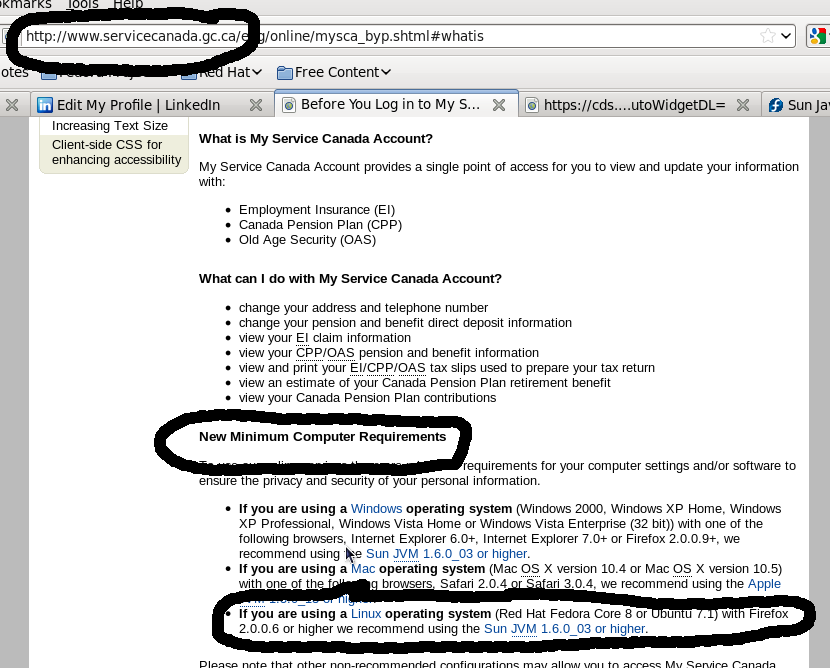Well, here I am, I finally did it. I’m going to FUDCon 2011 in Tempe, Arizona.
After months of saying to myself and friends “Oh I think I’d like to go do this” and asking my brother if he’s interested, and telling all sorts of people “Yep I’m doing it, I’m thinking about doing it, I’m still in the talking about it stage; I just haven’t committed to it yet”, I bought my airline tickets a couple of weeks ago to go to Phoenix, Arizona, and made reservations at the hotel. (Yes, the nice people at the hotel, months after the block was “closed”, graciously gave me the Red Hat Group rate for 6 out of 7 nights — quite the savings!)
So I’ve been working for the past few weeks at translating, updating, revising, rationalizing, etc. a presentation on System Security I presented at my local LUG a couple of years ago. (Of course it’s not in English, silly, why do you think I’ve had to work on translating it?) I’ve also been following the wiki page for the event (here’s my archive of the page). I even have my Fedora Friend Finder (here’s my archive of the page, since the webpage disappeared) ready to bring with me.
But … apart from a few blog posts here and there, and of course the availability of the administrative notices / minutes from the planning meetings, I haven’t found what appears to be, let’s say, an online forum where FUDCon is being discussed. (Yes, I know, there’s Planet Fedora — however, it seems to discuss pretty much everything under the Red Hat sun.) The kind of place where people discuss what they’re doing outside of the formal event structure, when they’re arriving, asking questions of participants of previous such events, and so on. Basically, chatter.
I’m wondering a few things, and hope that perhaps this post will help me out in at least finding a nudge in the right direction:
– Is there a forum where people are virtually gathering and discussing the plans and attendance and logistics and so on surrounding going to FUDCon? You know, chatter?
– Assuming that my presentation isn’t tossed for being too long, too technical, too boring, out in left field, or targeted to the wrong audience (it’s sysadmin stuff, not development), will there be a projector available? Will I need my laptop — which I’ll of course have anyway — or just a USB memory stick with the presentation on it? (OO.o format, or PDF? Of course I’ll be ready for all of these circumstances.)
– Regarding my presentation, will someone be wanting it to be submitted in advance for the part about “Refereeing for technical sessions”? Or will “in advance”, in keeping with the “so do not worry about competition” part, mean half an hour before the “Orientation, BarCamp pitches and scheduling” at 9:00am Saturday?
– I signed up after the 140 cut-off mark for food and swag. I don’t have a problem with the basic concept per se: you snooze, you lose, you should have signed up earlier. However, I’m just wondering what the real implications to this are — to what food is being referred? Breakfast, lunch, and supper throughout all the event? Snacks in the hospitality suite — no green stamp on your name tag, no food? A few chits for free meals, given to the first 140 people, at the Student Union cafeteria where a lot of people presumably will eat during the breaks? Food during the FUDPub, at which Red Hat “will be treating everyone to food”? (Or just the first 140 — everyone else with a differently-marked name tag will have to pull out their wallets?) I’m just trying to figure out logistics, that’s all; I’m trying to find the ad for the advertised food, so that I know what’s being discussed. Money isn’t the issue; I’m just looking for some kind of indication, that’s all.
Well, that’s off my chest.
In other directions, I guess I now have to prepare my laptop for going through customs:
– set up an automatic login (a warning against which is in my presentation);
– do a bit of a system cleanup (a suggestion about which is in my presentation);
– remove some privileged information and make sure that it’s really wiped;
– realize that US Customs probably won’t care about my computer, and that the only people who might will be the airline — and hopefully only be amused at the XRay area when they see the square, plastic bucket I carry it in (but hopefully not say that’s it’s oversized, which it shouldn’t be. The primary airline’s limits are 23 cm x 40 cm x 55 cm; the secondary airline’s limits are 23cm x 35cm x 56 cm. I’ve just checked, and it fits.)

